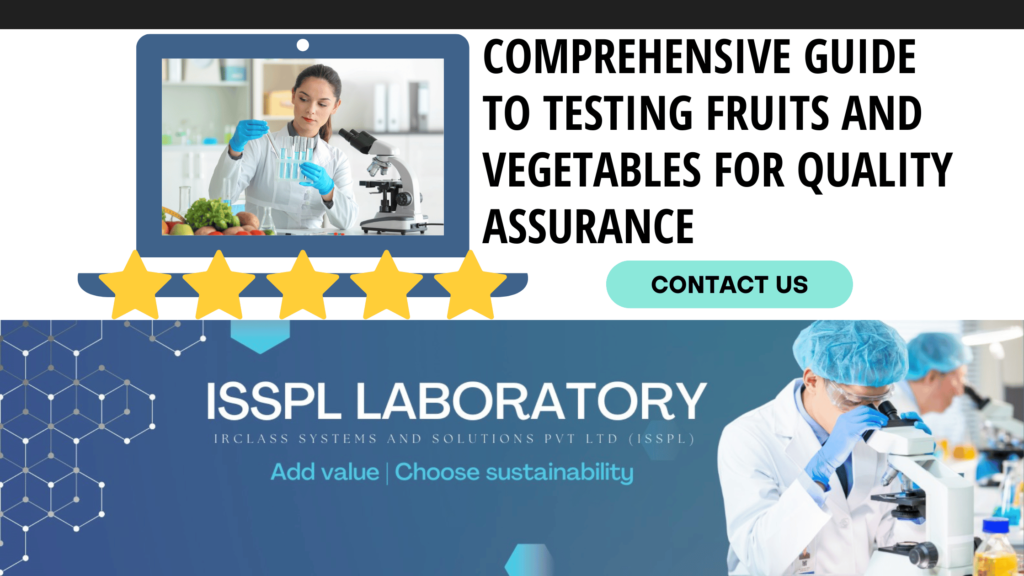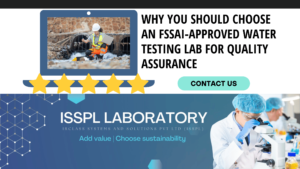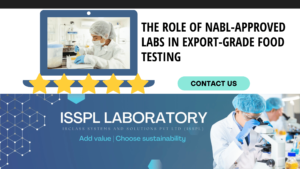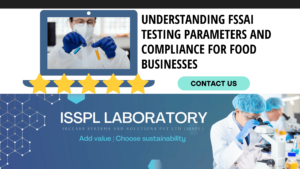An Overview by Team ISSPL - Analytical Testing Laboratory in India
ToggleAs people become more concerned about their food safety, it is now vital to ensure quality in fruits and vegetables. Regardless of where it will be sold, fresh produce is tested to ensure it’s free of harmful materials, nutritious, and remains fresh all the way to your plate.
The colorful and attractive look of fruits and vegetables is possible only after careful evaluation by scientists. The tests are designed to check for pesticide residues and also ensure the safety of microbes.
This guide describes the importance of quality testing for fruits and vegetables, the process used, and how it helps exporters and food manufacturers.
Why is it Important to Test the Quality of Fruits and Vegetables?
Fresh produce may become contaminated during the process of growing, harvesting, transporting, storing, and packaging. Should produce be found to have pesticides, pathogens, heavy metals, or mycotoxins, it may not be safe for people and cannot be exported.
Testing should always be conducted on fruit and vegetables.
- Comply with national and international rules and regulations.
- Ensure that goods delivered to consumers and retailers meet expectations.
- Guarantee that exported goods are accepted by importing countries.
- Maintain freshness, crispness, taste, and nutritional value.
- Prevent outbreaks of foodborne illness caused by microbes.
Basically, testing is done to earn trust, keep the brand safe, and maintain its reputation.
A Set of Laws and Standards Directs the Industry
Food safety laws differ for every country and product. Fresh products in India are managed by the Food Safety and Standards Authority of India (FSSAI). Most export-oriented produce is handled by APEDA and the Export Inspection Council (EIC).
There are also more rules in international markets.
- Maximum Residue Limits (MRLs) are established for pesticides in the EU under EC 396/2005.
- Codex Alimentarius outlines the standards for both microbiological safety and contaminants.
- The US FDA sets standards for the safety of fresh produce and food that comes from other countries.
These standards must be followed by testing laboratories to avoid delays and rejections.
The Studies Conducted on Fruits and Vegetables
Safety and quality are ensured by carrying out various tests using different parameters. They are mainly:
- Using GC-MS/MS and LC-MS/MS, multiple substances can be analyzed. It is possible to detect more than 200 pesticides using one test.
- Tests for E. coli, Salmonella, Listeria, and yeast & mold are conducted to prevent outbreaks.
- The ICP-MS instrument is used to find levels of lead, cadmium, arsenic, and mercury.
- Evaluation of vitamins, moisture, ash, sugar, and fiber helps with labeling and product certification.
- Checking for mycotoxins and aflatoxins in dried fruits and vegetables that come from tropical regions.
- Testing the pH, Brix, acidity, and firmness of the produce is part of quality assessment.
- Product longevity is determined by testing it in normal and accelerated conditions.
Different Methods of High-Level Testing
Advanced equipment is used in ISSPL to ensure that test results are accurate, sensitive, and can be repeated. Technologies include:
- The analysis of pesticide residues is carried out using LC-MS/MS and GC-MS/MS.
- ICP-MS is used for detecting ultra-trace amounts of heavy metals.
- HPLC is used to examine vitamins, sugars, and aflatoxins.
- Both microbial culture and PCR are used to find pathogens.
- Devices called texture analyzers and colorimeters are used to check the texture and color of foods.
With these technologies, large producers and exporters can meet deadlines and comply with all necessary regulations.
A Description of Testing
Steps are put in place to maintain the accuracy of the samples and the test results.
Sampling
Staff at farms, packhouses, or export units are trained to collect samples as per APEDA or EIC standards. Proper sampling minimizes contamination risks and ensures accurate results.
Sample Preparation
The produce is cleaned, mixed, and divided into parts for different examinations. Depending on the type of test, the samples may be dried, treated with acid, or extracted.
Testing Phase
Residues, nutrients, and pathogens are analyzed using chromatography, spectroscopy, and methods involving microorganisms or DNA.
Observing the Results and Reporting Them
The results are checked against standards in the country and abroad. Findings are summarized in a report, and clients are provided with useful suggestions.
Assuring the Certification and Compliance of the System
Labs issue certificates to prove that products comply with the standards of the country where they will be imported.
There are times when it can be difficult to test fruits and vegetables.
Even with today’s testing advancements, some difficulties remain.
- Since every fruit or vegetable is different, the tests used must be tailored accordingly.
- Nowadays, buyers require instruments that detect at parts-per-billion (ppb) levels for accurate measurement.
- Testing should be done rapidly to avoid delays and preserve product quality.
- Since global standards are always being updated, labs must regularly update their protocols.
Only laboratories with clearly defined procedures can consistently meet these demands.
What Accredited Testing Laboratories Do
Many food safety issues are resolved by the work of accredited laboratories. An ISO 17025 (NABL)-accredited lab recognized by FSSAI, APEDA, EIC, and other authorities provides more than just reports. They provide:
- All services such as sampling, transport, and testing.
- Export documents in multiple languages.
- Support for R&D, such as testing shelf-life, developing new formulas, and innovating products.
- Real-time digital dashboards available for enterprise clients.
They serve as quality partners, not just service providers.
Testing is an important issue that food brands and exporters should address.
A shipment can be rejected if it fails a test for pesticides or microbiology. If food is contaminated, it can seriously damage the brand’s reputation.
Testing is less costly than the consequences of non-compliance.
Today, both consumers and retailers demand transparency. They want to see proof that their food is safe, not just take someone’s word for it. We can only trust that assurance when it comes from accredited laboratories.
Conclusion
We can no longer assume that fruits and vegetables are of high quality. All farmers and exporters must guarantee that their produce is fresh, tasty, and suitable for sale.
Even if testing is required, it can provide a competitive advantage.
For those responsible for quality assurance in fresh produce, ISSPL offers expert knowledge, advanced technology, and nationwide services. ISSPL applies certified techniques and follows international standards to ensure the quality of every fruit and vegetable you consume.







